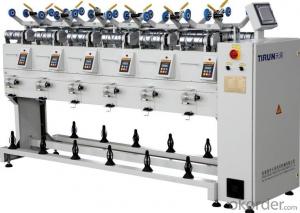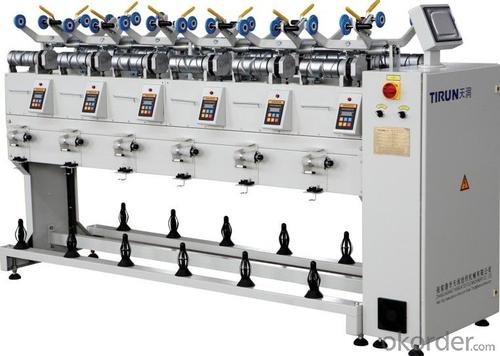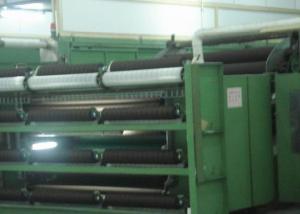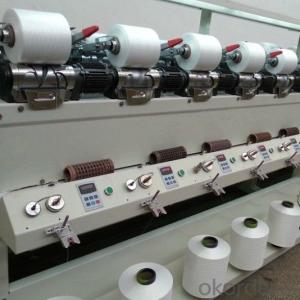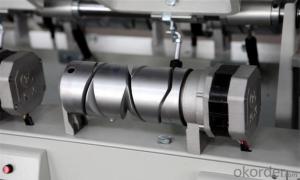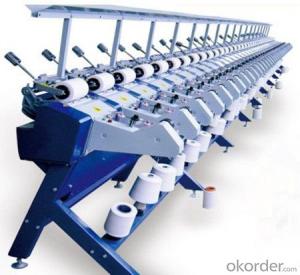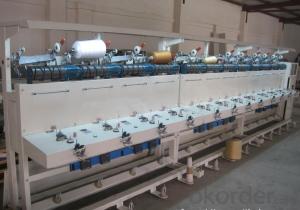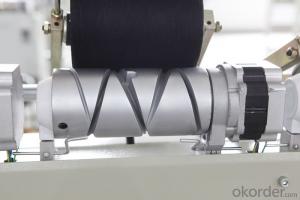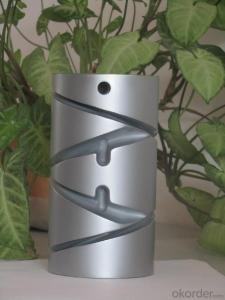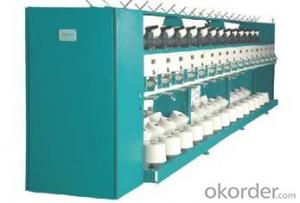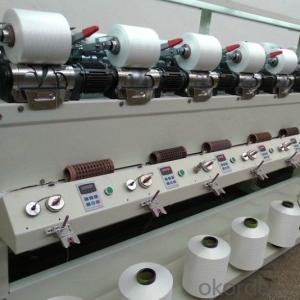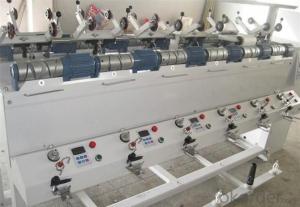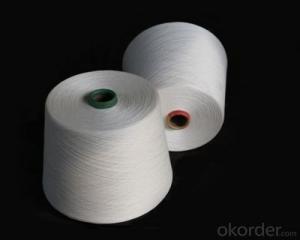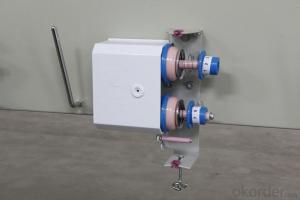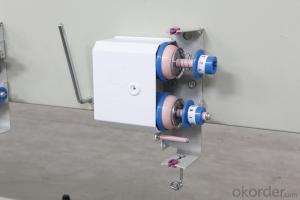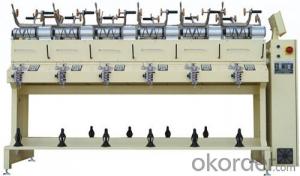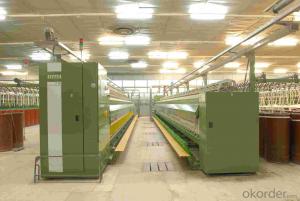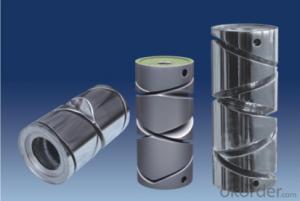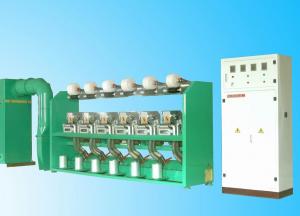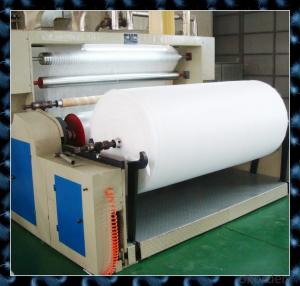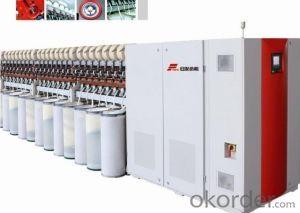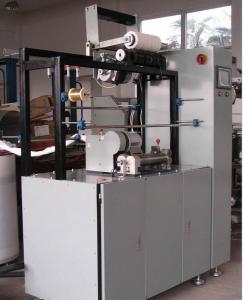Vertical Soft Yarn Winder for Winding Yarns on Cones
- Loading Port:
- Shanghai
- Payment Terms:
- TT OR LC
- Min Order Qty:
- 5 unit
- Supply Capability:
- 200 unit/month
OKorder Service Pledge
OKorder Financial Service
You Might Also Like
Description:
Vertical Soft Yarn Winder for Winding Yarns on Cones is suitable for winding yarns on cones with even density and soft package before dyeing.
Specifications:
Vertical Soft Yarn Winder for Winding Yarns on Cones
Usage:
Vertical Soft Yarn Winder is suitable for processing PP, PE split film yarn/ just twine, cotton twine, weaved twine to ball.
Main Features
Vertical Soft Yarn Winder has the following advantages:
High precision, highly polished, self-lubricating on surface, litter friction with yarn are our basic functions.
Highly accurate, mass-radius product is less than 10g·mm, and the linear velocity can reach 2000m/s.
High-tech in dealing with surface, and it makes our grooved drums have high wear resistance, corrosion resistance and makes sure the hardness of the groove and surface are the same.
Good forming and uniform linear density.
Product Description:
Pictures shows of Vertical Soft Yarn Winder
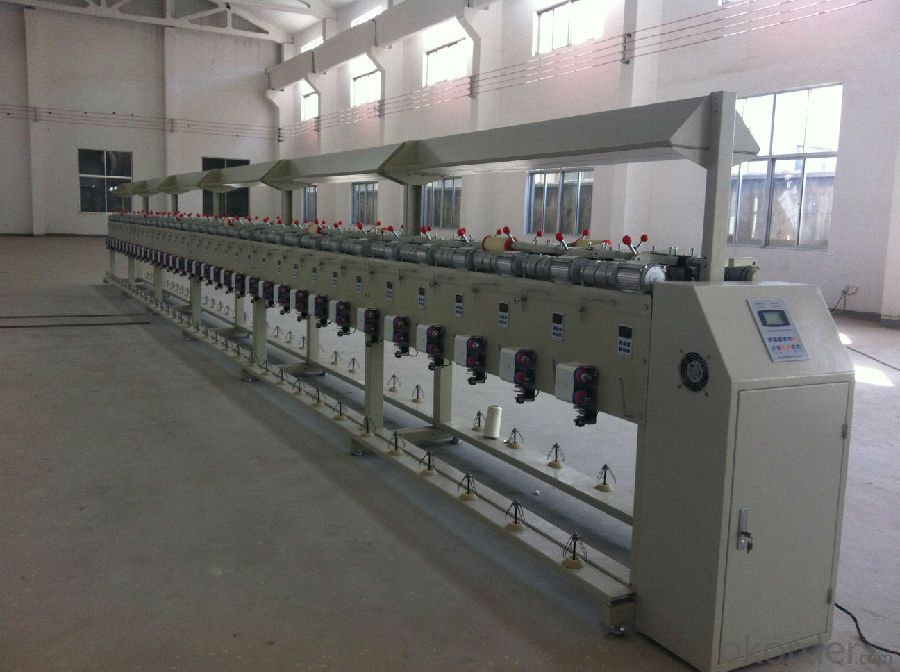
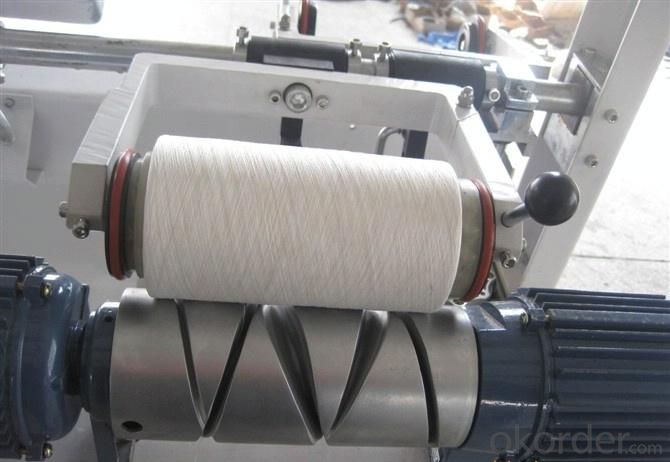
Models of Vertical Soft Yarn Winder
Model | Groove number of turns | Lead | Aperture | Outer diameter | Length | Package angle |
CT-B | 2.5 | 154 | φ20 | φ82 | 176 | 0° |
CT-S | 2.5 | 147 | φ20 | φ82 | 183 | 0° |
CT-S1 | 2 | 150 | φ20 | φ95 | 176 | 0°—3°30′ |
CT-J | 2.5 | 152 | φ20 | φ82 | 176 | 3°30′—5°57′ |
- Q: Why the first industrial revolution in the cotton textile industry innovation will cause the British national yarn shortage?
- Since the invention of the shuttle, people have been committed to the development of new textile machinery, unfortunately, progress has been unhappy. The gift of science is prepared for those who are prepared.
- Q: How does the mechanical wave generated in the spinning process work?
- But in some places meet the vibration to strengthen, in some places vibration weakened.
- Q: What are the general fixed assets of the textile industry?
- Spinning equipment, chemical fiber machinery, vinylon equipment, Wei Lun short wire spinning machine
- Q: What is the difference between yarn spinning and ring spinning?
- Such as carding, combing and blending, the bead is driven by the bobbin through the yarn to rotate around the collar, twist, and the friction of the collar is slightly smaller than that of the bobbin and the winding speed is high, The shape of the ring yarn, the fiber is mostly inside and outside the transfer of the conical spiral, so that the fiber in the yarn inside and outside the winding connection, the yarn structure is close, high strength, suitable for the system and weaving and knitting and other products.
- Q: How is the machine automatically connected to the machine?
- WL2001 automatic access machine, is the company's gold products, its parts are made of high quality steel, and after heat treatment, with well-produced, accurate size, high finish, wear resistance and so on.
- Q: What is the history of the development of textile machinery?
- 785 British E. Cartwright (also translated Edmund Carter Wright) invented the power loom, the same year the United Kingdom built the world's first steam-powered cotton textile mill, the textile industry from the workshop to the large industrial industry A turning point in the production transition. The progress of human society and the increase of population have promoted the development of textile industry and promoted the improvement of textile machinery accordingly. Energy reform (with steam instead of manpower, animal power) is laid the foundation of modern textile machinery.
- Q: Why did the first industrial revolution begin with the sign of Jenny's textile machine rather than shuttle?
- In the 1860s, the industrial revolution began with the British cotton industry, and then spread to mining, smelting, transportation and other industries in Europe
- Q: What is the textile process?
- Spinning process mainly include: cotton, carding, combing, and bars, roving, spun yarn.
- Q: Textile machinery production process is probably what kind of?
- And then the processing of a good machine frame is the initial installation of the wall after the installation (here first to do the foundation).
- Q: China's textile industry prospects of printing and dyeing ?
- Foreign-funded enterprises in addition to the equipment for the Chinese market, but also a large number of exports, and even anti-sales back to the country of origin. China is moving from one of the largest textile machinery market demand to Asia Textile Machinery Manufacturing Center, and even the world textile machinery manufacturing center.
Send your message to us
Vertical Soft Yarn Winder for Winding Yarns on Cones
- Loading Port:
- Shanghai
- Payment Terms:
- TT OR LC
- Min Order Qty:
- 5 unit
- Supply Capability:
- 200 unit/month
OKorder Service Pledge
OKorder Financial Service
Similar products
Hot products
Hot Searches
